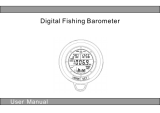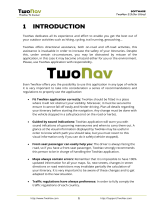
Table of Contents
Montana 600 Series Owner’s Manual i
Table of Contents
Getting Started ������������������������1
Device Overview............................1
Battery Information ........................2
Turning the Device On or Off .........4
Satellite Signals .............................4
Registering Your Device ................5
About the Main Menu ....................5
Using the Touchscreen ..................5
Rotating the Screen .......................6
Turning On the Backlight ...............6
Adjusting the Volume .....................7
Proles...........................................7
Waypoints, Routes, and
Tracks ��������������������������������������8
Waypoints ......................................8
Using Sight ‘N Go ..........................9
Where To? Menu .........................10
Routes ......................................... 11
Tracks ..........................................13
Adventures ..................................15
Navigation �����������������������������16
Navigating to a Destination..........16
Map..............................................17
Compass .....................................19
Elevation Plot...............................21
Trip Computer ..............................22
Camera and Photos ��������������23
Taking a Photo .............................23
Viewing Photos ............................23
Geocaches ����������������������������25
Downloading Geocaches.............25
Filtering the Geocache List ..........25
Navigating to a Geocache ...........26
Logging the Attempt.....................26
chirp
™
...........................................27
Applications ��������������������������28
Using the 3D View .......................28
About Sharing Data .....................28
Setting a Proximity Alarm ............29
Calculating the Size of an Area ...29
Using the Calculator ....................29






















